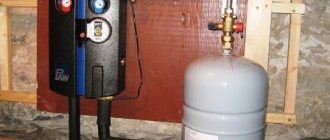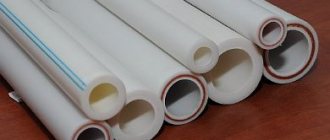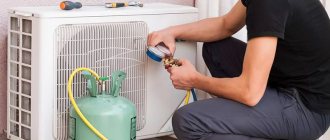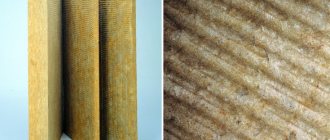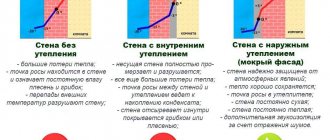Air conditioner refill methods
It is recommended to refill air conditioners with freon at least once every 1.5-2 years. During this time, a natural leakage of a significant part of the refrigerant occurs, which must be replenished. Operating coolers without refilling for 2 years or more can lead to failure of the device due to overheating and wear of parts, as well as oil leakage.
Refueling of air conditioning devices is carried out by specialized services. However, if you have the necessary tools, you can carry out this procedure yourself.
A beginner can do this procedure in two ways:
- By pressure. To find out the amount of freon, you need to look at the air conditioner instructions - the pressure level in the system will be indicated there. Then you need to attach a manifold to the device - it will show the real pressure level in the cooler. By subtracting the resulting value from the parameters specified in the documents, it is easy to find out the required amount of substance for refueling.
- By weight. When the air conditioner is fully charged, you can find out the required volume by weight. To do this, you also need to refer to the documentation. When filling the device with freon, the cylinder with refrigerant for the air conditioner is placed on an accurate scale. During the pumping process, you need to carefully monitor the weight of the cylinder and, when replenishing the lack of substance, immediately turn off the system.
Refilling the air conditioner: algorithm of actions
Before filling the air conditioning system with freon, you need to select the necessary tools and materials. To do this, you will need a pressure gauge, a cylinder with freon, a vacuum pump, as well as scales, which will be used to determine the volume of refrigerant in the air conditioner.
Algorithm of actions when refilling the air conditioner:
First you need to disconnect the cooler from electricity and determine the amount of freon required for refilling by weight or pressure in the system. You also need to “purge” the tubes with nitrogen to remove excess impurities from the system and make sure the system is tight
This is important to do if there is a suspected refrigerant leak due to system damage. Then you need to close the three-way valve clockwise. To determine the pressure level and refuel, you need to attach a pressure manifold to the fitting. After this, the three-way valve opens again, a refrigerant cylinder is connected to the manifold and pumped into the system.
Refrigerant Comparison Chart
Previously, ammonia was used as a refrigerant in the production of refrigeration units. However, this substance has a detrimental effect on the environment and destroys the ozone layer, and in large quantities can create health problems for people. Therefore, scientists and manufacturers began to develop other types of coolants.
Modern types of refrigerants are safe for the environment and people. They are different types of freons. Freon is a substance that contains fluorine and saturated hydrocarbons, which is responsible for heat transfer. Today there are more than forty types of such substances.
Freons are actively used in household and industrial appliances that cool air and liquids:
- As a refrigerant in a refrigerator.
- For cooling the freezer compartment.
- As refrigerants for cooler bags.
- To cool the air in an air conditioner.
The properties table allows you to select the optimal type of refrigerant. It reflects the basic properties of freons: boiling point, heat of vaporization, density.
When refilling the air conditioner, you may also need comparative tables of freons. They identify substances that can replace a particular refrigerant if it cannot be found on sale. Below is a simplified version of such a table with the most common types of coolers.
CFCs - chlorofluorocarbons, HCFCs - hydrochlorofluorocarbons, HFCs - hydrofluorocarbons
Air conditioner not cooling? How to refuel? Freon pressure table
To operate any air conditioner, a refrigerant is required, also called freon. Freon is fluorine and chlorine-containing derivatives of hydrocarbon compounds that are used as refrigerants in modern refrigeration units. Today, there are more than 40 types of stable compounds with various individual properties. In household air conditioners, two types of refrigerant are most often used: freon R22 and freon R410a. The letter R stands for Refrigerant - cooler, refrigerant. It is possible to buy refrigerant yourself and refill it, but only if you have specialized expensive tools, so it will be much cheaper and better to invite a specialist! You can see the refrigerant pressure in the system using a pressure gauge station.
During system operation there is no cooling, the blue (low pressure) pressure gauge measures the pressure at the inlet of the main circuit to the external unit - the refrigerant suction side (in front of the condensing unit), the red (high pressure) pressure gauge measures the pressure at the outlet of the main circuit from the external unit - discharge side (after the compressor-condensing unit).
The maximum low and high pressure values for each type of system, for any type of refrigerant, are usually indicated on the housing in the manufacturer's plate:
Discharge side - the discharge side, that is, high pressure, the refrigerant (freon) is in a liquid state, after the compression process by the compressor in the outdoor unit;
Suction side - suction side, that is, low pressure, the refrigerant (freon) is in a gaseous state after the evaporation process in the indoor unit of the air conditioner.
In domestic air conditioners operating in cooling mode during the warm season, it is necessary to measure the low pressure on the suction side of the refrigerant, that is, using a blue pressure gauge. The pressure gauge station is connected using a specialized hose to the service valve, which is located at the point where the thick (gas) tube is connected to the external unit. You need to let the system run (with the compressor on) in cooling mode for 10 - 15 minutes, and then look at the pressure gauge readings. Be sure to carry out the measurement only while the compressor is running.
But in order to refuel, you need to know what pressure should be in this air conditioner. For this, a table of freon pressure is used. Below you will find tables with pressure parameters for different types of freons and the most common air conditioner capacities. For high-quality pressure measurements and making a correct assessment, I recommend measuring the air temperature indoors and outdoors. You should also take into account that the data presented in these tables may differ slightly from what is measured in your specific conditions.
What pressure should it be and how to refill the air conditioner after checking
The pressure in the various circuits of the system depends on a number of factors. As noted earlier, this indicator is largely influenced by air temperature and the type of working fluid.
One way or another, for the most part, modern air conditioning systems are usually charged with universal types of refrigerants that have similar operating parameters. The most common of them is the so-called 134 freon.
So, in warm weather, this type of refrigerant should be in the air conditioning system under pressure equal to:
- 12 – 15 kg/cm 2 in the high pressure circuit;
- 1.5 – 5 kg/cm 2 in the low pressure circuit.
It must be remembered that this is one of the key performance characteristics of car climate systems. It allows you to judge the serviceability of its working units and elements.
The procedure for measuring air conditioner pressure often leads to loss of refrigerant. In this regard, there is a need to replenish the system to the required value.
To refuel the system, you should have some equipment with you. The list of equipment includes:
- manometric block;
- a pair of hoses for air conditioning;
- reservoir with working fluid;
- transition fittings with shut-off valves.
Even a novice car enthusiast can cope with refueling the system with freon; you just have to follow the step-by-step instructions:
- screw the fitting with the tap to the freon tank;
- connect the fitting to the hose;
- connect the other end of the hose to the pressure gauge station;
- mount the remaining hose with fitting on another outlet of the pressure gauge block;
- proceed directly to refueling the system by opening the tap.
To clarify the filling capacity of the air conditioning system of a particular car, just look at the information plate under the hood of your car. After studying it, you will find out the type/brand of working fluid and the volume of the system.
Do-it-yourself pressure level diagnostics
What should be the pressure in a car air conditioner and how to check this parameter? The diagnostic procedure involves the use of a pressure gauge station with all the necessary pipes and hoses. To connect to the air conditioning system, you will also need to additionally purchase adapters, which can be one of two types - for pushing or for firmware. The first option, judging by the reviews of experts, is more relevant, since such adapters are characterized by higher reliability and quality.
Before purchasing the correct adapter, it is important to understand exactly what fluid is used in the system. For example, in cars that were manufactured before 1992, R-12 freon is used in most cases
If we are talking about cars manufactured between 1992 and 1994, then such cars can use R-12 or R-134 standard fluids. This period is considered controversial because car manufacturers could not unanimously decide which standard was best to use. Cars that were produced after 1994 use a working fluid of the R-134 type (the author of the video is the Avtomatika channel - car air conditioners from A to Z).
To find out exactly what kind of freon is used in your car, we recommend that you read the service manual or the table, which is usually located on the back of the hood. Once all the tools and instruments necessary to complete the task are ready, diagnostics can begin. Opening the hood, you can see the lines of the air conditioning system; they are usually located to the left of the power unit. As a rule, these are two pipes - high and low pressure; to perform the test you will only need the latter.
Reduced pressure hoses are larger in diameter:
- First, you need to unscrew the plug on the line and instead install an adapter with a connected hose from the pressure gauge station. Before installation, clean the area around the plug to prevent possible contamination from entering the lines.
- Then, on the pressure gauge installation, you will need to unscrew one tap, but you do not need to touch the second. If you accidentally open it, it will cause freon to leak.
- After this, you need to start the car engine - diagnostics can only be performed when the unit is running. The best option is for the pressure in the car air conditioner to correspond to a value of 250-290 kPa.
If the resulting parameter is less than the specified range, this indicates the need to refuel the unit. If the pressure value is more than 290 kPa, then there is no longer a need to refuel the system, since this may cause a malfunction of the compressor device. This unit is not designed to work under high pressure conditions, so due to the increased pressure it may simply jam (video author - vassilij pavliuk).
Signs of a freon leak
Freon refrigerant in air conditioners is susceptible to leakage during operation. Over the course of a year of use, the amount of freon decreases by 4–7% naturally. However, if the air conditioner malfunctions or the indoor unit is damaged, a leak may occur in a new device.
It is important to determine it at the initial stage and refill the device with refrigerant in time
The main signs of a freon leak:
- Poor room cooling.
- The appearance of frost on the parts of the indoor and outdoor units.
- Oil leaks under taps.
- Increased noise and vibration of the device during operation.
- An unpleasant odor appears when the air conditioner is operating.
If the leak occurs as a result of prolonged use, the air conditioner can be restored to function by refilling it with refrigerant. If parts and freon tubes through which the cycle moves are damaged, not only refueling will be required, but also the intervention of cooler repair specialists.
Relationship between working pressure and temperature conditions
Car air conditioner malfunctions. 7 main car air conditioning problems
Thus, if external temperature conditions are slightly increased, then the operating pressure will increase proportionally. So, for example, if we consider refrigerant 410, then in this case, under conditions of an increase in the temperature within the room or outside it by five degrees, the operating pressure of freon in the air conditioning system will also increase. The value will be increased by 0.5 bar. Another dependence is observed for such a type of freon as R22, but here it differs depending on the street temperature, or this indicator within the room. In order to obtain updated figures, you should refer to specialized tables, everything should be indicated there.
Pressure and boiling table
The operating pressure of the refrigerant is proportional to the load on the compressor.
In addition to this indicator, the efficiency of the unit is affected by the pressure difference on the suction and discharge sides. Both characteristics of refrigerant 410a have high values. With the same performance, air conditioners with this type of freon are more expensive than models with other refrigerants. The price increase is due to the costs required to manufacture more durable components and parts. The table for the operating pressure of freon 410 in the air conditioner is presented in the form of a nomogram. It is compiled according to several indicators:
- indoor temperature;
- ambient temperature;
- suction operating pressure.
The actual pressure of the refrigerant changes several times a day. Its value depends on temperature fluctuations and the selected mode. Under normal conditions, the gas used boils at negative thermometer readings. The pressure created by the compressor allows you to change the boiling point.
The boiling table for freon r410a depending on pressure is used when checking for leaks.
| T,C | -5 | 5 | 10 | 15 | 20 | 25 | 30 | 35 | 40 | 45 | |
| P,bar | 5,85 | 7 | 8,37 | 9,76 | 11,56 | 13,35 | 15 | 16,65 | 19,8 | 22,9 | 26,2 |
Freon pressure table
Freon R410a pressure parameters on the suction side
Freon R22 pressure parameters on the suction side
Indoor temperature readings are for dry/wet bulb
But remember that high-quality diagnostics can only be carried out by a specialist who can not only connect a pressure gauge station to the required valve, but also has a good understanding of the structure and specifics of the refrigeration cycle. Many people, without possessing these skills and knowledge, as well as additional tools, such as a clamp tester, draw conclusions about the lack of freon only by the pressure in the system. Very often (especially in cold weather) this leads to the appearance of excess pressure and, subsequently, the death of the compressor.
All household split systems are supplied with refrigerant already pumped into them. If it suddenly turns out that there is a leak, then before refueling, you must find the cause of the leak, eliminate it, and only then refuel. Otherwise, the work will be done in vain and everything will happen again.
Freon R22 - consists of one component, therefore it is easier to use for refilling air conditioners in case of leakage. It can be pumped into the system without the use of electronic scales, using only a pressure gauge station and an electronic thermometer. Since freon R22 is recognized as harmful to the environment and the ozone layer, its use is gradually being phased out. In the European Union countries, this type of refrigerant has been banned since 2010. At the moment, household air conditioners are supplied to the Russian Federation only using the safer and more modern R410A freon, and in the near future equipment will begin to be supplied using the new R32 freon.
Attention: systems operating on R410 freon can be refueled only in very rare cases, and only a competent specialist can determine this. Mostly, refilling with R410a freon occurs when the length of the freon line is increased during installation, and is done by adding refrigerant strictly by weight for each meter of line that exceeds the standard, the weight is indicated in the installation instructions for the system
In cases of R410a freon leakage, air conditioners should be refilled by weight, having first removed all old freon from the system. This is due to the fact that R410a consists of two components, and in the event of a leak, one component, having a higher density, squeezes out the other, disturbing the proportion of the components, as a result of which the refrigerant loses its thermodynamic properties.
Refilling process with freon R410a.
If the “air conditioner” simply “threw” a pressure gauge unit onto the service valve and started filling the air conditioner with R410a freon without electronic scales, you should know that the result will be a call to another technician, and possibly a failure of the system.
Refilling the air conditioner is a very responsible procedure that can only be entrusted to a qualified specialist!
If you want to carry out professional diagnostics and refueling of your air conditioner, I recommend contacting our partner, who kindly provides a 15% discount on all work and materials to any buyer of our store*
*Affiliate discount is provided based on the purchase invoice
freon pressure table r22; freon pressure table r410; freon pressure table R407; freon pressure table R32
Source
Freon pressure in the air conditioner
Check the freon pressure in the air conditioner
Freons used in air conditioning systems circulate within a closed circuit. Simply put, the circuit consists of two heat exchangers (evaporator and condenser), a compressor and a throttle valve. If in the evaporator the refrigerant passes from the liquid to the gas phase, taking away the heat of the room air, then in the condenser it turns back into liquid. That is, due to the evaporation and condensation of the refrigerant in a closed circuit, the thermal energy of the air is selected and released into the environment. The operating principle of the split system is based on this.
Checking the refrigerant pressure is usually done when the air conditioner is operating in cooling mode. At the same time, the low pressure gauge (blue) measures the pressure at the inlet to the outdoor unit - the refrigerant suction side in front of the condensing unit. And the high pressure gauge (red) measures the pressure at the outlet of the outdoor unit - the refrigerant discharge side after the condensing unit.
To measure freon pressure, a pressure gauge is connected (screwed) to the service valve using a special hose, which is located at the point where the thicker tube is connected to the outdoor unit. It should be noted that the measurement is performed with the compressor running 15 - 20 minutes after the system is started in cooling mode.
The type of refrigerant and its factory charge, the maximum low and high pressure values for each air conditioner are usually indicated on the external unit housing on the factory label.
Graphs of the dependence of pressure on temperature outside and inside the room are given in the service manuals of the manufacturers.
Air conditioner operating pressure (freon R22)
Dependence of the operating pressure of the air conditioner in cooling mode on the temperature outside and inside the room. Indoor temperature change: from + 21.0°C to + 32.4°C. Change in outside temperature: from + 25.0°C to + 45.0°C.
The table shows the R22 freon pressure values for an air conditioner of 7000 BTU/h. 32.4/24.0 = DB/WB, where DB is a “dry” bulb, WB is a “wet” bulb.
R22 is a hydrochlorofluorocarbon compound (HCFC) that is still widely used today. It has some, although small, ozone depletion potential (ODP). Therefore R22 will not be used in the future. Filling refrigeration units with R22 refrigerant leads to an increase in discharge temperature. Carefully study all parameters that affect the discharge temperature.
Air conditioner operating pressure (freon R410A)
Dependence of the operating pressure of the air conditioner in cooling mode on the temperature outside and inside the room. Indoor temperature change: from + 21.0°C to + 32.4°C. Change in outside temperature: from + 25.0°C to + 45.0°C.
The table shows the pressure values of R410A freon for an air conditioner of 9000 BTU/h. 32.4/24.0 = DB/WB, where DB is a “dry” bulb, WB is a “wet” bulb.
Danfoss Refrigerant Slider application - refrigerator line
The Danfoss Refrigerant Slider app is undoubtedly the most popular app among refrigeration professionals. It turns your smartphone into a convenient and very fast tool for determining the dependence of the refrigerant temperature on its pressure. The application version for iOS and Android contains data not only on the popular freons R22, R410A, R407C, but also on more than 80 refrigerants. There is also a function for calculating GWP according to the IPCC AR 5 standard.
Refilling the air conditioner with freon
All air conditioners are charged with refrigerant during production. More precisely, the external unit of the split system is charged with freon. The presence of factory filling at the time of installation indicates the tightness of the circuit and ensures readiness for work immediately after installation is completed. If it suddenly turns out that there is a leak, then before refueling, you must find the cause of the leak, eliminate it, and only then refuel. Otherwise, the work will be done in vain and everything will happen again.
Freon R22 is a one-component refrigerant. Therefore, it is the easiest to use when refilling air conditioners in the event of a leak. It can be pumped into the system using only a pressure gauge station, that is, by pressure at a certain temperature.
Systems running on R410 freon can be refueled, but only a specialist can determine this. Refilling with R410a freon will be required during installation if the route length exceeds the recommended one. Refilling is done by adding refrigerant by weight for each meter of line that exceeds the standard. The estimated amount of additional refrigerant is indicated in the installation instructions.
If R410a freon leaks, air conditioners should be refilled by scale, having first removed all old freon from the system. The fact is that R410a consists of two components. In the event of a leak, one component, having a higher density, squeezes out the other, disrupting the proportion of components in the mixture. As a result of a leak, the refrigerant loses its thermodynamic properties.
Advantages and disadvantages of freon R 410a
- The high level of specific cooling capacity does not require the installation of a powerful compressor.
- In the event of a leak, the gas quantity is easily replenished without loss of refrigerant quality.
- Ample opportunities arise in terms of reducing equipment energy consumption.
- Cooling performance is 50% higher than R22 and 407c systems.
- Good thermal conductivity and low viscosity have a positive effect on the efficiency of the system. Heat is transferred faster and with less cost to move.
- High operating pressure in the system, which negatively affects the compressor, leads to rapid wear of the bearings.
- The pressure difference between the suction and discharge sides of the refrigerant reduces the compressor efficiency.
- The requirements for circuit tightness are increasing. The wall thickness of the main copper pipes must be greater than for R22. Minimum value 0.8 mm. A significant amount of copper increases the cost of the system.
- The refrigerant is not compatible with HVAC components made from elastomers sensitive to diphthomethane and pentafluoroethane.
- Polyester oil used in conditioner is more expensive than mineral oil.
Advantages and disadvantages of R410a refrigerant
Freon R410a differs from R22 in a number of advantages:
- has no harmful effects on the environment, has zero potential for impact on ozone;
- characterized by increased refrigeration efficiency;
- is non-toxic and allows you to work without restrictions in the absence of open flame sources;
- chemically stable;
- when leak points form, there is no percentage change in the composition of the refrigerant, so it is enough to refill the system;
- fireproof, does not support combustion;
- high thermodynamic properties;
- 20% less is required to refill the system, so it is possible to install more economical compressors in refrigeration equipment;
- maintains operational parameters longer.
R410a refrigerant has a high SEER global warming index, similar to R22. But since the equipment operates more efficiently, it is believed that the resulting greenhouse effect is smaller due to the reduction in thermal emissions. The temperature slip indicator does not exceed 0.15K. In practical operation, such deviations are practically unnoticeable.
In the case of transition to different states of aggregation, the refrigerant has a constant temperature, which increases the cooling efficiency of air conditioners. High cooling capacity is the main advantage of freon. The parameter is 50% higher when compared with R-407c and R-22. Thanks to the ability to refill the refrigeration circuit with the required amount of substance, complete regeneration of the refrigerant is avoided.
The main disadvantage of R410a freon is its high operating pressure. For efficient operation of a system charged with R22, the compressor increases the pressure in the circuit to 16 atmospheres. Air conditioners operating on R410a require a pressure of up to 26 atmospheres at operating temperature, so the pipeline must meet tightness requirements, especially at the junction of the tubes with the condenser, evaporator and other elements. For this reason, the use of durable parts is required to ensure tight circulation in the circuit and the operation of the air conditioner. The devices use copper parts, which increase the cost of the equipment.
Freon has a different composition than R22 and does not allow retrofitting. Climate systems designed to circulate old refrigerant cannot be replaced with an ozone-friendly substance. Climate control devices must be designed and calculated for charging R410a. To replace R22 refrigerant in a split system or other air conditioner, it is necessary to make design changes (clarifications) and increase the tightness (strength) of the circuit, since freon circulates at a pressure that is 1.6 times higher than the readings of the previous freon.
The next disadvantage of freon is its insolubility in mineral oil. For 410 freon you need a special polyester oil. In addition, during servicing that involves refilling the circuit, increased care is required, since the refrigerant actively absorbs moisture, which impairs the performance properties of the substance.
Region I - supply of liquid freon.
Region I conventionally lies 2 bars above the freon condensation line. It is precisely these suction conditions that high-pressure pump manufacturers often require.
Both liquid pumps and booster compressors and Haskel pump compressors can operate in this area.
The operation of liquid pumps is most efficient, since freon does not undergo phase transitions during pumping, but is strictly in the liquid phase - otherwise the pump will not pump.
Booster compressors and pump-compressors strive to transfer the liquid into the gas phase during the suction cycle, and transfer it back to the liquid phase during the discharge cycle. As a result, compressors supply multiphase media, which significantly reduces efficiency.
Air conditioner pressure parameters
Finding out the pressure in the air conditioner is very simple. The information must be indicated on the outdoor unit. Pressure indicators are objective only for equipment of the same models. Different models from the same manufacturer can operate at different pressures. The parameters depend on the type of compressor and power.
The table shows the upper values of high and low pressure in the air conditioning system:
- discharge side – high pressure side, here freon, after passing through the compressor, is in the liquid fraction;
- suction side – low pressure side. In the evaporator, freon becomes gaseous.
The refrigerant pressure level in the system can only be adjusted by manual refilling or bleeding. There are no special pressure valves in air conditioners of household models (unlike car air conditioners).
Features of application
- centrifugal compressors;
- flooded evaporators;
- pump refrigeration units.
The new freon has found application in air conditioning systems and household heat pump units. The azeotropic mixture is suitable for equipment with direct expansion and flooded heat exchangers. Due to its high density, refrigerant is used in domestic and industrial installations:
- transport cooling systems;
- air conditioning installations in offices, public buildings, industrial facilities;
- household refrigerators;
- commercial and food refrigeration equipment.
Synthetic (polyester) oil is used together with freon 410a. The disadvantage of the product is its high hygroscopicity. When refueling, avoid contact with wet surfaces. It is recommended to use PLANETELF ACD 32, 46, 68, 100, Biltzer BSE 42, Mobil EAL Arctic products. Mineral oils are not compatible with refrigerant; their use will damage the compressor.
Source
Technical characteristics of refrigerant r410a
| Parameter | Unit change | Meaning |
| Molecular mass, | g/mol | 72,58 |
| Boiling point at 1 atm | °C | -51,58 |
| Freezing point | °C | — |
| Critical temperature | °C | 72,1 |
| Critical pressure | MPa | 4,92 |
| Critical density, | kg/cub.m | 488,9 |
| Liquid density at 25 °C | kg/cub.m | 1062 |
| Specific heat capacity of liquid at 25 °C | kJ/kg | 1842,192 |
| Specific heat capacity of vapor at 1 atm | kJ/kg | 711,756 |
| Heat of vaporization at boiling point | kJ/kg | 264,3 |
| Saturated vapor density at -25 °C | kg/cub.m | 18,5 |
| Saturated vapor density at -51.58 °C | kg/cub.m | 4 |
| Steam pressure at 25 °C | MPa | 0,1653 |
| Flammability limit in air | % volume | No |
| Self-ignition temperature, 0C | °C | — |
| Flammability class | A1 | |
| Ozone Depletion Potential ODP | ||
| Global Warming Potential HGPW | 0,45 | |
| Global Warming Potential GWP | 1890 | |
| MPC at the workplace, ppm | 1000 |
Refrigerant R410A
So, what is freon R410A and what is it used with? Refrigerant R410A is a gas that replaced R22 , which is the refrigerants R32 and R125 . The mixture has zero ozone depletion potential (ODP) because none of its constituent components contains chlorine. Increased cooling capacity has made it possible to reduce the overall dimensions of the main elements of the hydraulic circuit: pipelines, heat exchangers, and other components of the air conditioning system.
R410A is a pseudo-azeotropic mixture, namely its temperature during phase transitions practically does not change, therefore, if there is a leak from the system, the composition of the mixture in the circuit remains unchanged, which allows you to add the required amount after repair and avoid complete regeneration of the refrigerant. At the same time, the new refrigerant is characterized by significantly higher operating pressures in the hydraulic cycle.
For example, at a condensation temperature of 43ºС, R22 has a pressure of 15.8 atm, and R410A - about 26 atm. Therefore, a simple replacement of R22 with a new R410A is excluded and equipment upgrade requires making design changes to the elements of the hydraulic circuit to increase their strength. Just like R407C , it is insoluble in mineral oil and requires the use of synthetic polyester oil. When installing air conditioning systems using R410A , the following rules must be followed, similar to R407C :
! — prevent contamination from entering the hydraulic circuit; ! — when soldering pipelines, they must be filled with an inert or weakly interacting gas, for example, nitrogen with a low moisture content; ! - carefully perform vacuuming; ! — refill the refrigerant only in the liquid phase.
The term R410A, why R410A?
| ODP — | Ozone Depletion Potential. | GWP — | Global Warming Potential. |
| The degree of ozone destruction is standardized relative to the R11 refrigerant, the ODP value of which is set to “1”. R410A refrigerant has ODP=0. | Global warming potential shows the ability of gases to reflect heat, retaining it in the near-Earth surface in the presence of a given gas in the atmosphere. For comparison, gas [CO2] is used, the GWP of which is set to “1”. |
Properties
R410A is an azeotropic mixture:
R410A refrigerant consists of a mixture of refrigerants: R32 - 50% and R125 - 50%
Properties of the azeotropic mixture:
Unlike R407C (zeotropic mixture), phase changes in an azeotropic mixture occur at a constant temperature during the condensation/evaporation process.
R 410A has a very small “temperature glide” and can be considered azeotropic.
! ∆tg = Temperature glide for R410A practically =0 K
Working with freon line R410A
! Use only inch copper pipes for freon lines.
Socket processing sizes for systems using R410A are larger than for systems using other types of refrigerants to improve sealing:
Minimum pipe thickness for systems using R410A refrigerant:
! Cutting pipes only with a pipe cutter. ! Carefully remove any burrs. ! Make sure no chips get inside the pipe. ! Soldered joints must be free of flux and scale. ! Do not clean connections with sandpaper before soldering. Solder flows better on a smooth surface. ! Solder only under inert gas. Use dry nitrogen or other inert gas.
Soldering without shielding gas leads to the formation of oxides on the surface of the pipes, which are washed off by the refrigerant and circulate in the refrigeration circuit. At high temperatures in the compressor operating area, these oxides can cause decomposition of the refrigerant and refrigeration oil. The result is a malfunction of the installation. ! Pipes should be stored in a dry place with hermetically sealed ends.
Leak test
Before vacuuming, it is necessary to conduct a leak test. ! The hydraulic circuit using R410A refrigerant is sealed in the following order: Method 1:
— The circuit is filled with dry nitrogen to a pressure of 1.0 MPa.
( check to see if there is a pressure drop during the 1st hour
) - The circuit is filled with dry nitrogen to a pressure of 4.15 MPa.
— After 24 hours, monitor the change in pressure. If the pressure has not decreased after 24 hours, the system can be considered sealed. The pressure in a circuit filled with nitrogen changes as the ambient temperature changes. To determine the change in pressure in the circuit, use the formula: P1/T1=P2/T2
, where
P1 , T1
- pressure in the circuit and ambient temperature at the beginning of the test
P2 , T2
- pressure in the circuit and ambient temperature at the end of the test (
after a day
) .
Method 2: — The circuit is filled with refrigerant to a pressure of 0.2 MPa. — The circuit is filled with dry nitrogen to a pressure of 4.15 MPa. The test is carried out using an electronic leak detector. ( R22 leak detector is not able to detect R410A refrigerant leak
)
Vacuuming R410A
The basis for the correct functioning of air conditioning systems is the correct vacuuming of the circuit. — By vacuuming, air and moisture are removed from the circuit. Why does the hydraulic circuit need to be evacuated?
Evacuation prevents the following consequences: ! The presence of non-condensable impurities leads to an increase in condensation pressure and operating temperature of the compressor. ! The presence of moisture leads to decomposition of the refrigeration oil and freezing of the throttling device. ! Polyester oils used with R410A are very hygroscopic and absorb moisture from the air. As a result of chemical reactions, acids are formed in the hydraulic circuit. ! Oxygen present in the air interacts with the refrigeration oil, which leads to compressor failure
To remove water from the hydraulic circuit, it is necessary to evaporate it by reducing the pressure using a vacuum pump.
Boiling point R410A
The table below shows the dependence of the boiling point of water on pressure:
Boiling point of water at sea level = 100°C.
At an altitude of 4800 m, where the atmospheric pressure is 555 mBar, water boils at 84°C.
Thus, the lower the pressure, the lower the boiling point of water.
The lower the ambient temperature, and therefore the temperature of the water in the circuit, the greater the vacuum must be created using a vacuum pump to remove moisture.
The table shows that vacuuming in the autumn-winter period must be carried out for a longer time.
Evacuation parameters R410A
For evacuation, it is necessary to use a pump that provides a pressure drop of 65 Pa in 5 minutes.
It is recommended to use a two-stage pump with a capacity of at least 8-15 m3/h.
The vacuum pump must be equipped with a check valve to prevent mineral oil from the pump from entering the hydraulic circuit.
Duration of evacuation R410A:
After reaching a vacuum value of at least 650 Pa, continue vacuuming for one hour. At the end of vacuuming, leave the circuit under vacuum for one hour to check for the absence of moisture. After one hour, the pressure in the circuit may rise by no more than 130 Pa. Measuring instruments. ! The low pressure gauge mounted on the manifold is not suitable for measuring vacuum levels. A conventional pressure gauge does not have sufficient measurement accuracy to determine the change in pressure in the system during evacuation. ! Before evacuation, a leak test of the hydraulic circuit must be carried out. ! For high-capacity systems, it is recommended that after reaching a vacuum level of 650 Pa, fill the system with dry nitrogen to an excess pressure of 0.5 Bar. and continue vacuuming. ! To speed up the process, it is necessary to carry out evacuation simultaneously on the discharge and suction lines. Conclusion : if you have carefully read the contents of this article, you will not have any difficulties using R410A refrigerant
You can refill air conditioners and other air conditioning systems with R410A refrigerant by contacting our company’s specialists by phone; (495) 960-82-03; or through feedback, who will advise you and guide you on the company’s prices.
Thermodynamic properties of R-12 refrigerant
R12-TD-5.pdf – Table of thermodynamic properties of R-12 refrigerant. Temperature range: -100 to +112 degrees Celsius in 5 °C increments. The SI system is used. The table shows:
- Temperature, °C;
- Absolute specific pressure (bar);
- Specific density (cub.m./kg);
- Specific enthalpy of liquid and steam in kJ/kg;
- Specific entropy of liquid and steam in kJ/(kg*K).
R12-TDF-10.pdf – Table of the thermodynamic characteristics of the R-12 refrigerant in the imperial (English) system of measures. Temperature range -130 to +230 degrees Fahrenheit. Step - 10 degrees (-130, -120, -110, etc.). The table shows:
- Temperature, °F;
- Pressure (absolute), psi (psi);
- Specific volume, cubic feet/lb;
- Internal energy, Btu/lb;
- Enthalpy, Btu/lb;
- Entropy, Btu/(lb*R).
Features of application
- centrifugal compressors;
- flooded evaporators;
- pump refrigeration units.
The new freon has found application in air conditioning systems and household heat pump units. The azeotropic mixture is suitable for equipment with direct expansion and flooded heat exchangers. Due to its high density, refrigerant is used in domestic and industrial installations:
- transport cooling systems;
- air conditioning installations in offices, public buildings, industrial facilities;
- household refrigerators;
- commercial and food refrigeration equipment.
Synthetic (polyester) oil is used together with freon 410a. The disadvantage of the product is its high hygroscopicity. When refueling, avoid contact with wet surfaces. It is recommended to use PLANETELF ACD 32, 46, 68, 100, Biltzer BSE 42, Mobil EAL Arctic products. Mineral oils are not compatible with refrigerant; their use will damage the compressor.
Source
What should be the freon pressure in home and car air conditioning?
Due to the evaporation and condensation of the refrigerant in a closed circuit, the thermal energy of the air is selected and released into the environment. This is the operating principle of any refrigeration machine. The physical state and other parameters of the working substance are constantly changing. But most ordinary users are interested in only one characteristic - freon pressure in the air conditioner.
The rationale is clear: many owners of private houses and apartments want to service the split system themselves, filling the refrigerant in the simplest way found on the Internet. We will reveal the essence of the method in 3 stages - the theoretical part, diagnostics and instructions for refueling.
Operating pressure and air temperature
Despite many unfavorable factors, thanks to the practical observations of air conditioning service specialists, the following approximate pressure values can be presented. If R410 refrigerant is pumped into the line at a positive street temperature of 24-28 degrees, then the pressure will be 6.4 Bar, and at 12-15 degrees it will be 5 Bar.
If the circuit is filled with R22 freon and at the same temperature readings, the pressure will already be 4.3 and 3.3 Bar, respectively. But these digital data can only be trusted if the parameters listed above are consistent, and in the absence of reasons for low pressure that determine a gas leak.
The missing volume of freon is indicated by:
· discrepancy between the indicators of the configured mode and the actual values;
· constantly running compressor;
· frost formation on valves and pipe connections or heat exchanger;
If at least one of these malfunctions is detected, you must contact the service center.
Freon is a mixture of gases that allows the air conditioner to cool the room. The refrigerant circulates in the system, evaporates in the heat exchanger and lowers the air temperature. Freon r 410a is the working gas of most modern air conditioners. It replaced R22 refrigerant, which negatively affects the ozone layer.
Refilling and refilling the air conditioner with freon
refilling tool kit
How is air conditioning refilled with freon, and how does it differ from refueling?
Refilling is a partial replenishment of the lost volume of refrigerant. It may be needed in case of a leak or during preventative refueling. It is also carried out when the route is enlarged during installation. On average, the factory volume of refrigerant pumped is designed for 5 meters of route. If its length increases, then the air conditioner must be refilled with freon at the rate of 30 grams per meter of line.
For household air conditioners with R-22 freon and the like, the refueling method is used, and for systems with R-410a freon, only the full refueling method is used. This gas consists of a mixture of chemical substances with varying degrees of volatility, which evaporate completely unevenly, therefore, the composition of the remaining substance varies greatly.
A full charge is the replenishment of the entire volume of gas in the refrigeration device. It is necessary when refilling household air conditioners with freon after moving, when all the refrigerant has previously been drained, or when replenishing the volume of freon, which has a complex composition.
Release of freon from the air conditioner
Before pumping freon into the air conditioner when it is fully charged, the remaining gas must be released from it. How to properly drain freon from an air conditioner, and what tools are needed for this?
Some technicians don’t see anything wrong with simply loosening the nuts on the external unit and venting everything into the atmosphere, considering a small amount of refrigerant safe for the environment. In its pure form it is actually harmless, but you shouldn’t do it that way. To release it from the air conditioner, you must have a freon collection station, which cuts into the air conditioning system using a special fitting and pumps out all the gas from it.
Next, a vacuum is carried out, and only after that a cylinder with freon is connected and it is pumped into the air conditioner at the required rate.
How much freon do you need?
Different refrigeration systems contain different amounts of refrigerant. How much freon can be in the air conditioner depends on the cooling capacity of the unit. On average, its volume in standard splits ranges from 700-800 grams, and in powerful installations for commercial or industrial use more than a kilogram.
The required volume is indicated by the manufacturer on a nameplate, which is a metal plate on the internal body of the split. It helps determine how much freon should be in the air conditioner. Using a pressure gauge, the technician determines the pressure in the cooling housing and looks at this plate.
Air conditioner refill methods
filling by weight
Recharging the air conditioner can be done in several ways, but the simplest and most commonly used are:
- refilling by weight (by scale) - you will need expensive scales to weigh the refrigerant cylinder;
- filling by pressure - at values below 3-3.5 atm, gas replenishment is required;
- by current - you will need a current clamp applied to the phase of the power wire of a working external unit.
There are two more methods: refueling by hypothermia and by overheating. But in reality, they are used only when checking industrial compressor-condensing units, since household splits do not have a device that regulates freon consumption. Its role is played by a capillary tube.
Only experienced installers know all the safe ways to drain freon in an air conditioner and how to make up for its shortage. You should not try to carry out such actions yourself, which can lead to burns of the skin or eyes, as well as completely disable the refrigeration machine.
Freon R410a pressure parameters on the suction side
Washing the outdoor unit of the air conditioner using a KARCHER mini washer
Refilling the air conditioner, refilling the air conditioner, checking the pressure.
To operate, the air conditioner requires a refrigerant - freon . In household systems, as a rule, two types of refrigerant are used: R22 freon or R410a freon . The letter R stands for Refrigerant - cooler, refrigerant. It is possible to buy freon yourself and refill the air conditioner, but it is better to invite a specialist!
You can check the freon pressure in the air conditioner using a pressure gauge station.
| Pressure station for R22 | Pressure gauge station for R410a |
When the air conditioner is operating in cooling mode, the blue pressure gauge ( low pressure ) measures the pressure at the inlet of the main circuit to the outdoor unit - the refrigerant suction side (in front of the condensing unit), the red pressure gauge ( high pressure ) measures the pressure at the outlet of the main circuit from the outdoor unit - discharge side (after the compressor-condensing unit).
The maximum low and high pressure values for each air conditioner, for any type of freon, are usually indicated on the external unit housing on the factory markings:
Discharge side - the discharge side, that is, high pressure, the refrigerant (freon) is in a liquid state, after the compression process by the compressor in the outdoor unit;
Suction side - suction side, that is, low pressure, the refrigerant (freon) is in a gaseous state after the evaporation process in the indoor unit of the air conditioner.
In household split systems, when operating in cooling mode in the warm season, as a rule, the low pressure on the suction side of the refrigerant is measured, that is, using a blue pressure gauge. To measure, the pressure gauge is connected (screwed) using a special hose to the service valve, which is located at the point where the thicker tube is connected to the outdoor unit. Next, let the air conditioner run (with the compressor running) in cooling mode for 10-15 minutes, and look at the pressure gauge. It is important to remember that the compressor is switched off periodically, measurements are taken only when it is running.
Below are tables with pressure parameters for various types of freons and popular air conditioner capacities. For the pressure measurement process, it is desirable to know (measure) the air temperature inside and outside the room. It is also important to understand that the parameters given below (in the tables) may differ slightly from those measured under these specific conditions.
Freon R410a pressure parameters on the suction side
Source
Characteristics of R410a on the saturation line
| Temperature, C | Saturated liquid | Saturated steam | |||||||
| Saturation pressure, 105 Pa | Density, kg/m3 | Specific enthalpy, kJ/kg | Specific entropy, kJ/(kg*K) | Saturation pressure, 105 Pa | Density, kg/m3 | Specific enthalpy, kJ/kg | Specific entropy, kJ/(kg*K) | Specific heat of vaporization, kJ/kg | |
| -50 | 1,123 | 1339,761 | 131,4 | 0,726 | 1,122 | 4,526 | 401,5 | 1,936 | 270,1 |
| -45 | 1,417 | 1325,036 | 137,8 | 0,754 | 1,415 | 5,616 | 404,6 | 1,924 | 266,8 |
| -40 | 1,770 | 1309,941 | 144,2 | 0,782 | 1,767 | 6,909 | 407,5 | 1,913 | 263,4 |
| -35 | 2,191 | 1294,45 | 150,7 | 0,809 | 2,187 | 8,435 | 410,5 | 1,902 | 259,8 |
| -30 | 2,689 | 1278,534 | 157,3 | 0,837 | 2,683 | 10,224 | 413,3 | 1,891 | 256,0 |
| -25 | 3,273 | 1262,162 | 164,0 | 0,864 | 3,265 | 12,312 | 416,1 | 1,882 | 252,0 |
| -20 | 3,954 | 1245,297 | 170,9 | 0,891 | 3,944 | 14,738 | 418,8 | 1,872 | 247,8 |
| -15 | 4,743 | 1227,897 | 177,9 | 0,918 | 4,730 | 17,546 | 421,3 | 1,863 | 243,4 |
| -10 | 5,651 | 1209,914 | 185,1 | 0,945 | 5,635 | 20,785 | 423,8 | 1,854 | 238,7 |
| -5 | 6,690 | 1191,292 | 192,5 | 0,973 | 6,670 | 24,511 | 426,1 | 1,846 | 233,6 |
| 7,872 | 1171,968 | 200,0 | 1,000 | 7,849 | 28,79 | 428,3 | 1,837 | 228,3 | |
| 5 | 9,211 | 1151,863 | 207,7 | 1,028 | 9,184 | 33,696 | 430,2 | 1,829 | 222,5 |
| 10 | 10,719 | 1130,887 | 215,7 | 1,055 | 10,688 | 39,317 | 432,0 | 1,821 | 216,3 |
| 15 | 12,410 | 1108,928 | 223,9 | 1,084 | 12,375 | 45,759 | 433,6 | 1,812 | 209,6 |
| 20 | 14,299 | 1085,849 | 232,5 | 1,112 | 14,260 | 53,149 | 434,8 | 1,803 | 202,4 |
| 25 | 16,399 | 1061,481 | 241,3 | 1,141 | 16,357 | 61,643 | 435,8 | 1,794 | 194,5 |
| 30 | 18,725 | 1035,603 | 250,5 | 1,171 | 18,681 | 71,44 | 436,4 | 1,785 | 185,9 |
| 35 | 21,293 | 1007,926 | 260,2 | 1,202 | 21,247 | 82,798 | 436,6 | 1,774 | 176,4 |
| 40 | 24,116 | 978,057 | 270,4 | 1,233 | 24,070 | 96,062 | 436,2 | 1,763 | 165,9 |
| 45 | 27,211 | 945,435 | 281,2 | 1,266 | 27,165 | 111,722 | 435,2 | 1,750 | 154,0 |
| 50 | 30,592 | 909,218 | 292,8 | 1,301 | 30,549 | 130,504 | 433,4 | 1,736 | 140,6 |
Danger to humans
R32 refrigerant is considered a fire hazard. But it belongs to class A2L. In this abbreviation, the first letter “A” means that the gas has low toxicity. And the designation “2L” means that it belongs to substances of medium fire hazard. Class A2L substances have the following characteristics:
- Concentration in air for combustion is more than 0.3 kg/m3;
- Burning rate 400 ppm.
If there is a leak, R32 refrigerant may catch fire. But this requires special conditions. An ordinary spark will not be able to set it on fire. For freon to ignite, energy of at least 15 megajoules is needed. In addition, it will burn if its concentration in the air is from 13.3% to 29.3% (according to studies published by the Consortium of European Historical Libraries).
If freon R32 is exposed to high temperatures in other concentrations, it decomposes. In this case, fluorides are formed. Some of them pose a health hazard.
R23 refrigerant is almost 2 times heavier than air. When there is a leak, it accumulates at the bottom. Accordingly, it is very difficult to breathe in them. This freon actually poses no threat to humans.
Source
Technical characteristics of freon R410a
| Characteristic | Meaning |
| Molecular weight (g/mol) | 72.58 |
| Boiling point at atm. pressure (°C) | -51.58 |
| Mass fraction of R125 | 0.5 |
| Mass fraction of R32 | 0.5 |
| Liquid density at 25 °C, (kg/m3) | 1062 |
| Saturated vapor density at 25 °C, (kg/m3) | 18.5 |
| Critical temperature (°C) | 72.1 |
| Critical pressure, kPa (abs.) | 5166 |
| Critical density of liquid, kg/m3 | 488.9 |
| Steam pressure at 25 °C, kPa (abs.) | 173.5 |
| Heat of vaporization at normal boiling point, kJ/kg | 264.3 |
| Flammability limit in air (0.1 MPa), vol.% | No |
| ODP (ozone depletion potential) | |
| HGWP (Global Warming Potential) | 0.45 |
| GWP (100-year global warming potential) | 1890 |
| MAC (maximum permissible inhalation concentration), ppm | 1000 |
| Net weight in standard metal cylinder (kg) | 11.3 |
| Saturated vapor density at boiling point, kg/m3 | 4 |
| Latent heat of vaporization at boiling point BTU/pound | 116.7 |
| Specific heat capacity of liquid at 25°C BTU/pound °F | 0.44 |
| Specific heat capacity of vapor at 1 atm. BTU/pound °F | 0.17 |
Specifications
In terms of physical properties, a mixture of two hydrofluorocarbons is close to azeotropic. During phase transitions, its temperature glide is minimal, almost equal to 0. This means that both components simultaneously evaporate and condense. Freon R 410a has high cooling capacity. Improved performance makes it possible to reduce the size of climate control equipment and refrigeration units. The refrigerant is non-toxic and fireproof; it does not ignite in air.
At the condensation temperature of freon r410a, which is 43°C, its pressure reaches 26 atm. For comparison, the same indicator for R22 is 15.8 atm.
Physical characteristics of freon r410a
Characteristics
The absence of chlorine in both components of the refrigerant does not harm the ozone layer.
High global warming potential is a disadvantage of the connection. The ejection effect is similar to R22. The system is refilled only in the liquid phase. Transportation and storage are carried out in pink cylinders that can withstand a pressure of 48 bar. Containers are filled to 75% weight.

